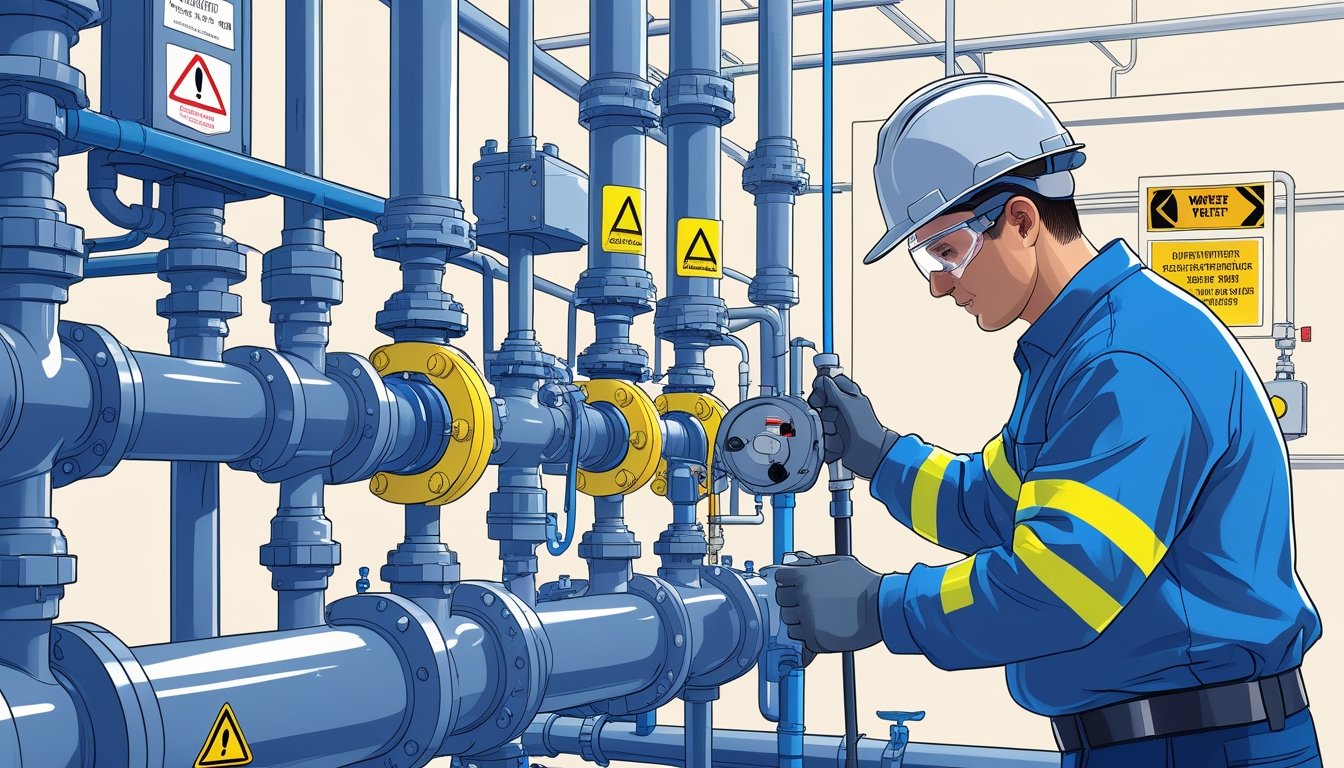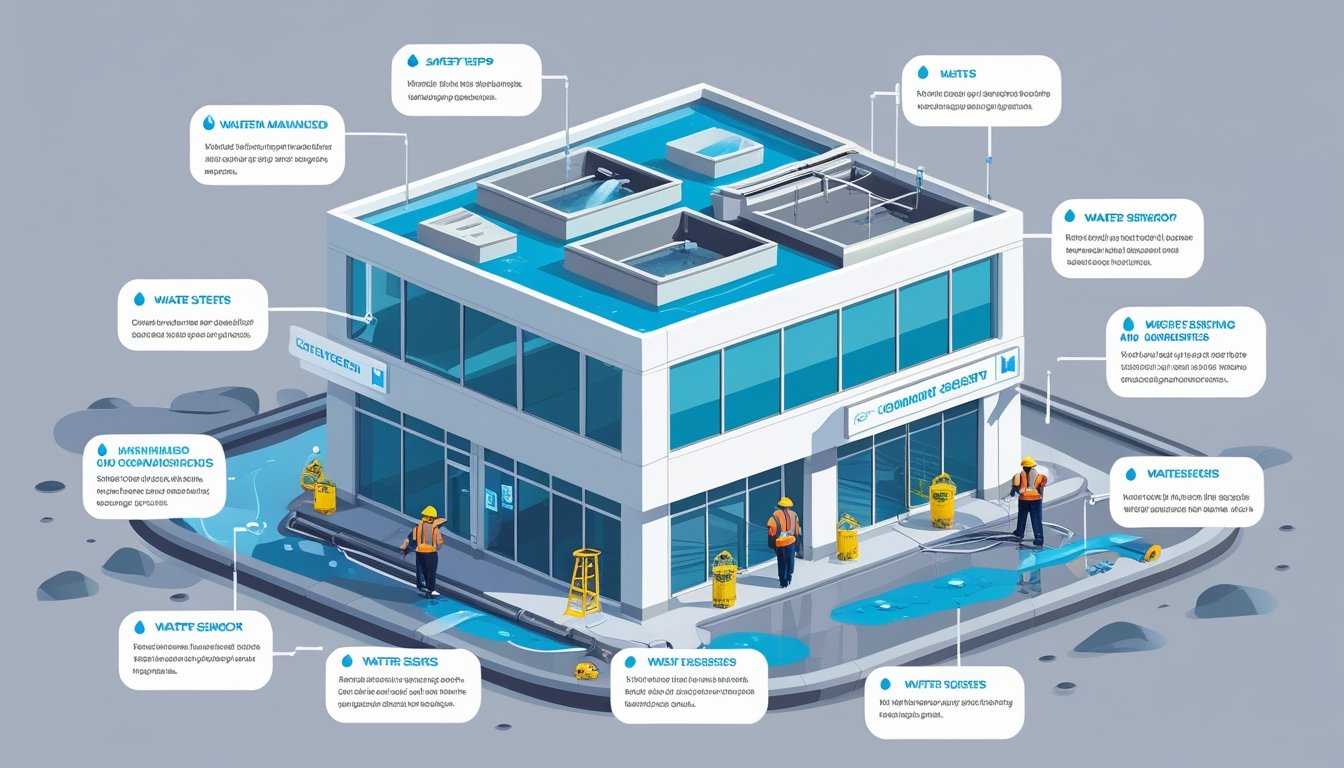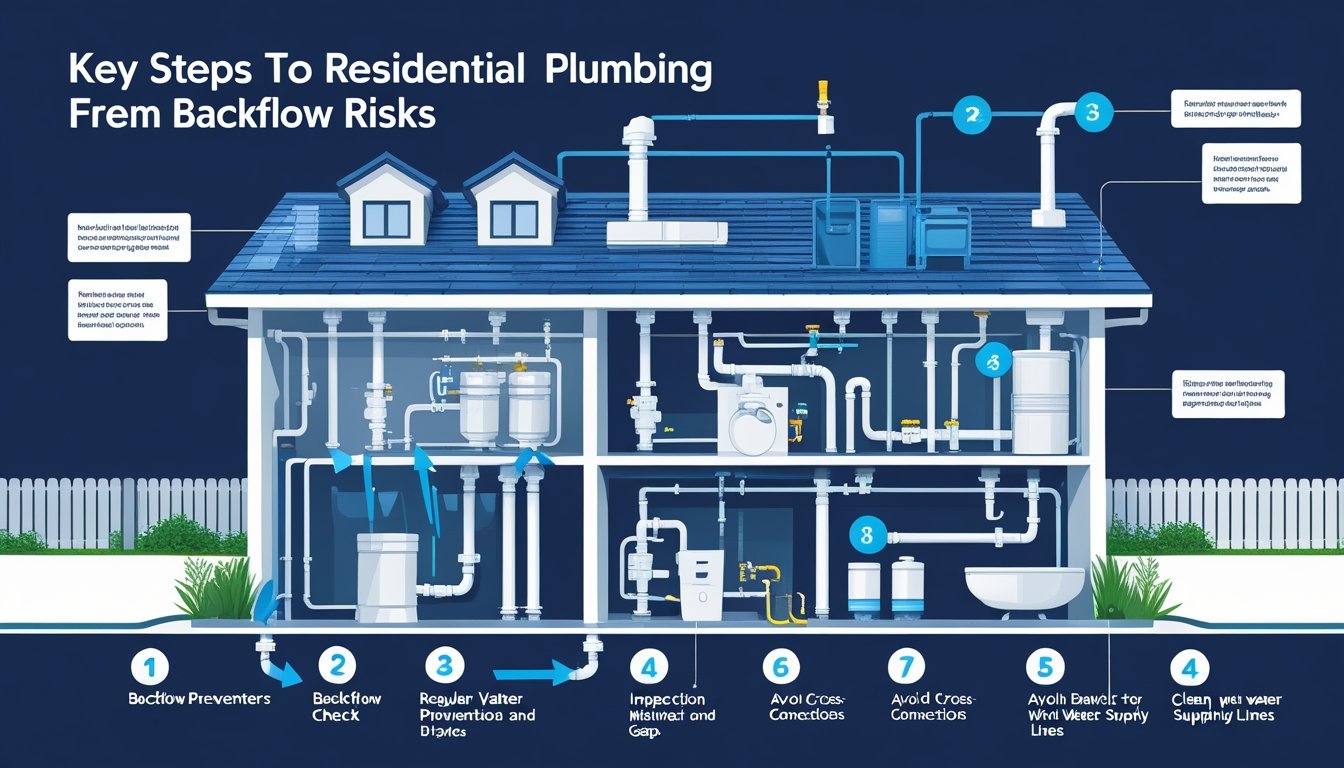As a homeowner, ensuring the safety and quality of your water supply is essential. Installing a backflow preventer can be crucial for any home, especially if you have irrigation systems, wells, or fire suppression systems. Without this device, there's a significant risk of contaminated water flowing back into your drinking supply.
Many homeowners might wonder if a backflow preventer is truly necessary. The answer largely depends on your specific plumbing setup and local regulations. In many areas, having a backflow preventer is mandated to protect both your home and the community’s water supply from potential contamination.
At Pacific Backflow, we understand the importance of safeguarding your water system. With nearly five decades of experience providing reliable backflow testing and installation throughout San Diego County, we ensure that your home remains compliant and protected. Trusting a knowledgeable service can give you peace of mind, knowing your water supply is in safe hands.
Understanding Backflow and Its Risks
Backflow is a plumbing issue that can compromise the safety of your potable water. Understanding its causes and associated health risks is essential for all homeowners. This section outlines what backflow is, the common causes leading to it, and the potential health hazards from contaminated water.
What Is Backflow
Backflow occurs when water flows in the opposite direction in your plumbing system. This reversal can lead to the contamination of your drinking water supply. It often happens when there is a drop in water pressure, allowing non-potable water from various sources to enter your clean water lines. A properly functioning backflow preventer is vital for maintaining safe drinking water in your home.
Local regulations often require backflow testing to ensure systems are working correctly. Consider contacting a trusted provider like Pacific Backflow for reliable backflow prevention services.
Causes of Backflow in Home Plumbing
Several factors can lead to backflow in your plumbing. One common cause is a drop in pressure, which may occur during emergencies or heavy usage. This situation can create a vacuum effect that pulls contaminated water into clean water lines. Cross-connections—where non-potable water sources connect with potable systems—are another significant risk.
Additionally, plumbing malfunctions, such as failed air gaps or defective backflow devices, can aggravate the issue. Regular maintenance and testing can help identify vulnerabilities in your system.
Health Hazards of Contaminated Water
The risk of health hazards associated with backflow cannot be overstated. Contaminated water can introduce harmful substances, including bacteria, chemicals, and other pollutants, into your drinking supply. This contamination may lead to illnesses ranging from gastrointestinal issues to more severe health problems.
Using contaminated water for cooking, cleaning, or bathing can also pose serious risks, especially for vulnerable populations, such as children and the elderly. Ensuring your backflow prevention system is functional is critical to protecting your family’s health.
Taking preventive measures and utilizing the services of professionals like Pacific Backflow will help ensure your water supply remains safe and compliant with local regulations.
How Backflow Prevention Works
Backflow prevention is essential to maintaining the integrity of your water supply. Understanding how it operates involves recognizing the mechanisms that can cause water to flow in reverse and the protections put in place.
Back Pressure and Back Siphonage
Back pressure occurs when the pressure in a system is greater than the supply pressure, often due to pumps or temperature changes. This can push water backward, potentially mixing potable water with contaminants.
Back siphonage happens when there is a sudden drop in supply pressure, creating a vacuum that pulls water back into the supply line. This can occur during firefighting activities or pipeline breaks. Both situations require proper backflow prevention devices to ensure that water only flows in one direction, maintaining the safety of your drinking water.
Role of Cross Connections
Cross connections are points in a plumbing system where potable water could mix with non-potable water. Common examples include sprinkler systems and hose connections. If a backflow event occurs, water can easily flow from contaminated sources into the clean water supply.
Identifying cross connections is critical. Regular inspections can help to ensure that appropriate backflow prevention methods are in place. Installing devices like reduced pressure zone (RPZ) assemblies can provide effective protection against potential contamination from cross connections.
Types of Backflow Events
There are generally two types of backflow events to consider: back pressure and back siphonage.
1. Back Pressure: This occurs when pressure builds up in a system. It can happen due to the use of pumps, leading water to reverse direction and potentially contaminate the supply.
2. Back Siphonage: This occurs when there is a drop in water pressure, creating a vacuum that pulls contaminated water into the clean water supply.
Both events can have serious implications for your water quality. Utilizing devices that prevent these occurrences is crucial for home safety.
If you need expert assistance with backflow prevention in your home, consider the services offered by Pacific Backflow, serving all of San Diego County. With decades of experience, they ensure your system is safe and compliant.
Backflow Prevention Devices for Homes
Understanding backflow prevention is crucial for maintaining safe water supplies in your home. Various devices are available, each serving specific needs and requirements to protect your plumbing system from contamination.
Air Gap
An air gap is one of the simplest and most effective backflow prevention devices. It involves creating a physical separation between the water supply and the potential backflow point, typically seen in kitchen sinks.
This method requires a vertical distance between the outlet of a fixture and the flood level of the receptacle below. For example, leaving space between a faucet and the sink prevents any backflow from contaminating the drinking water supply.
Air gaps are typically required under plumbing codes for dishwashers and other appliances. Their effectiveness is reliable; however, they need proper maintenance to ensure no obstructions could compromise their function.
Pressure Vacuum Breaker
A pressure vacuum breaker is designed to prevent backflow due to a drop in pressure within the water system. This device is commonly used in irrigation systems and can handle varying pressure conditions without risk.
When water flows, the pressure vacuum breaker allows water to enter the system freely. If a drop in pressure occurs, it closes to prevent water from flowing back. Installation is straightforward, allowing you to protect your system effectively without complex requirements.
Keep in mind, while this device does not require electricity to operate, it should be placed above the highest irrigation system point. Regular inspection by a professional like Pacific Backflow can ensure it functions correctly and meets local codes.
Hose Bib Devices
Hose bib devices attach to outdoor faucets, making them a practical option for homeowners who use garden hoses frequently. These specialized backflow preventers are essential for preventing contaminants, such as fertilizers or pesticides, from entering the main water supply.
When the hose fills with water, the device prevents backflow by using a check valve. This feature allows water to flow out but prevents any potential reverse flow when the spigot is turned off.
To maintain effectiveness, it’s wise to check these devices regularly, especially after seasonal use. Ensure they are in good condition to safeguard your water supply from any outdoor contaminants.
For reliable installations and maintenance of backflow prevention devices, consider Pacific Backflow, serving all of San Diego County.
Assessing Your Need for Backflow Prevention
Determining the necessity of a backflow prevention device involves understanding potential cross-connection risks, assessing specific water supply systems, and being aware of local regulations. Awareness of these factors can help you protect your home's drinking water supply and ensure compliance with safety standards.
Identifying Cross-Connection Risks
A cross-connection occurs when non-potable water mixes with your drinking water supply. Common sources of these risks include irrigation systems, swimming pools, and industrial equipment. If your home includes any of these elements, you must evaluate the likelihood of contaminants entering your water distribution system.
Inspect your plumbing for potential connections to sources of contamination. Consider installing a backflow preventer if you identify any risk factors. Regular assessments can significantly reduce the potential of harmful backflow incidents.
Irrigation and Water Supply Considerations
If you have an irrigation system, especially one that draws water from a well or surface source, you must implement backflow prevention. These systems can easily become cross-connected with your drinking water supply, especially during maintenance or lawn watering.
A licensed plumber can install the appropriate preventers, ensuring your irrigation system operates without risking the safety of your drinking water. Knowing local water supply rules can dictate the type of backflow devices required for your situation, making it essential to stay informed about these specifications.
Regulations and Local Code Requirements
Local codes often mandate the installation of backflow prevention devices in specific scenarios, particularly for residential properties with pools or irrigation systems. Regulations vary by jurisdiction, so it's crucial to check with your local authorities.
You may be required to conduct annual testing to verify that your backflow preventer is functioning correctly. Pacific Backflow can assist with this testing and ensure you meet local compliance requirements. Staying compliant protects not just your home but also the broader community's water supply.
Installation, Testing, and Maintenance
Understanding installation, testing, and maintenance of a backflow prevention system is key to protecting your water supply. Regular attention ensures the device operates effectively and maintains water quality.
Hiring a Professional Backflow Tester
When it comes to backflow testing, hiring a certified professional is crucial. An experienced backflow tester has the skills to evaluate your backflow preventer accurately, ensuring compliance with local regulations. Pacific Backflow provides this service with a focus on reliability and responsiveness.
The backflow tester will thoroughly inspect your system, checking for adequate pressure and potential leaks. This expert evaluation not only ensures compliance but also prolongs the life of your backflow prevention system. A professional touch guarantees peace of mind for you and your family.
Routine Backflow Testing
Annual backflow testing is essential to guarantee that your system functions correctly. Regular inspections help identify any issues before they escalate, protecting your water supply from contamination. You should schedule these tests with a certified technician like those at Pacific Backflow.
During testing, the technician will assess the effectiveness of the device, examining water piping and pressure levels. If problems arise during the test, repairs may be necessary. Prompt action helps maintain compliance with water district requirements and keeps your home’s water supply safe.
Maintaining Water Quality
Maintaining water quality involves regular upkeep of your backflow prevention system. Ensure that the system remains free from debris and that all components are functioning correctly. Inspections by qualified technicians assist in this process.
Consider implementing additional protections, such as custom-fitted cages, to prevent theft or vandalism of your backflow device. These measures enhance security and longevity. Regular maintenance and testing reduce the risk of backflow incidents, keeping your water supply clean and safe for your household.
Frequently Asked Questions
Understanding backflow prevention can help you make informed decisions about your home's water safety. Below are some common questions regarding the necessity, function, and implications of backflow prevention devices.
Is a backflow preventer required by building codes for residential properties?
Yes, many building codes do require the installation of backflow preventers for certain residential properties. These regulations aim to protect the drinking water supply from contamination. The specific requirements may vary based on location, so it's essential to check local codes.
What specific devices in my home require the installation of a backflow preventer?
Backflow preventers are typically required for devices such as irrigation systems, fire suppression systems, and pool fillers. Any system that connects directly to your water supply and can potentially introduce contaminants may necessitate a backflow device to ensure safe water.
How does a backflow prevention device operate and what does it look like?
A backflow prevention device typically uses a series of valves to ensure that water flows in only one direction. Visual designs can vary, but they commonly consist of a cylindrical or rectangular box installed on water lines. You can easily identify these devices on your property.
Can the absence of a backflow preventer at home lead to potential issues?
Yes, not having a backflow preventer can result in serious issues, such as contaminated water reaching your home. This can expose you, your family, and others to harmful substances. Installing a backflow device protects against these risks.
Are there measures in place to ensure that shower systems are equipped with backflow prevention?
Yes, many modern shower systems include backflow prevention features, such as vacuum breakers. These devices help to prevent water from flowing back into the main supply. Regular maintenance checks can ensure that these systems are functioning correctly.
Why might a home be without a backflow preventer, and what are the implications?
A home might lack a backflow preventer if it was built before regulations were enforced or if previous owners did not install one. This can put the water supply at risk and may lead to legal penalties if the property is found non-compliant with current regulations.
If you have more questions or need assistance, consider reaching out to experts like Pacific Backflow, who provide reliable backflow testing and installation services across San Diego County.











